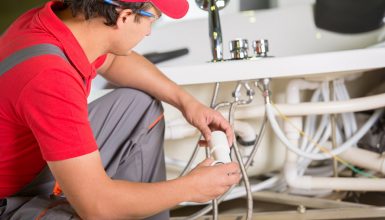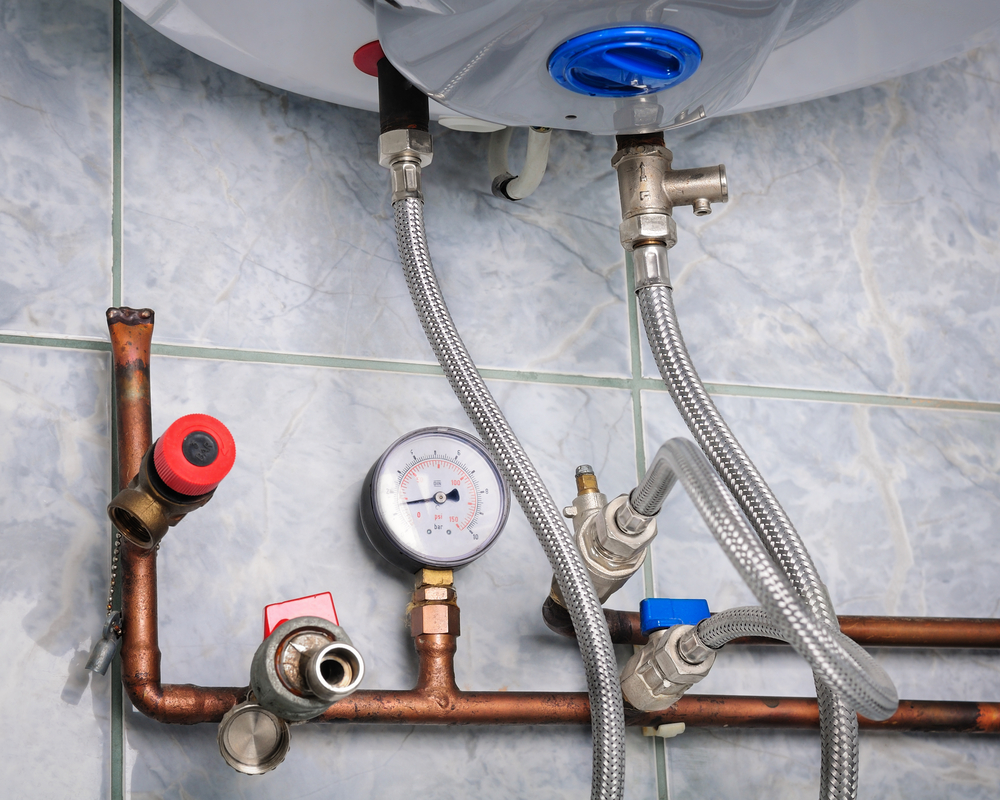Methods to Address Low Water Pressure in Your Home
Methods to Address Low Water Pressure in Your Home
Blog Article
What are your thoughts about 9 Reasons for Low Water Pressure in Your House?

Low tide pressure in your home can be a frustrating issue, influencing everything from showering to cleaning meals. If you're experiencing weak water circulation, there are a number of possible reasons and solutions to check out. In this guide, we'll talk about typical reasons for low tide pressure and sensible actions to address the concern efficiently.
Intro to Low Water Stress
Low water stress happens when the circulation of water from your taps, showers, and other components is weak than normal. This can make everyday jobs much more tough and much less effective. Recognizing the root causes of low water stress is crucial to locating the ideal solution.
Typical Root Causes Of Low Tide Pressure
Pipeline Obstructions
Over time, pipelines can come to be obstructed with natural resource, debris, or debris, restricting the circulation of water. This is a common issue in older homes with galvanized steel pipes.
Deterioration
Deterioration within pipelines can lead to leaks and minimized water stress. Corrosion buildup can tighten water flow, particularly in aging plumbing systems.
Faulty Pressure Regulatory Authorities
Stress regulators are accountable for maintaining regular water pressure in your home. If they malfunction, it can lead to low tide pressure or irregular flow throughout your house.
Local Water Supply Issues
Sometimes, the trouble lies outside your home. Local water supply concerns, such as main line leakages or upkeep work, can momentarily lower water stress in your area.
Just How to Detect Low Tide Pressure
Inspecting Faucets and Fixtures
Begin by testing the water pressure at various faucets and components throughout your home. If the problem is isolated to particular areas, it might show local problems.
Evaluating Pipes
Examine visible pipelines for indicators of leaks, corrosion, or clogs. Take notice of any type of unusual sounds, such as knocking or rattling pipelines, which can suggest concerns within the plumbing system.
Consulting with a Plumber
If you're unable to pinpoint the reason for low water stress, take into consideration employing a professional plumber to conduct a complete assessment. They can recognize underlying issues and advise ideal remedies.
Do It Yourself Solutions to Take Care Of Low Water Stress
Cleaning Up Aerators and Showerheads
Mineral deposits can gather in aerators and showerheads, reducing water circulation. Get rid of and clean these elements consistently to enhance water pressure.
Flushing Hot Water Heater
Debris build-up in the water heater can restrict flow and decrease performance. Purging the container occasionally helps remove debris and preserve optimum performance.
Examining Stress Regulatory Authority
Guarantee that the pressure regulatory authority is operating correctly. Changing or changing the regulator can assist restore proper water pressure throughout your home.
Clearing Up Clogs in Piping
For minor clogs, attempt using a plumbing snake or chemical drainpipe cleaner to clear obstructions in pipes. Be cautious when making use of chemicals and adhere to safety and security guidelines.
When to Call a Specialist Plumber
If DIY initiatives stop working to settle the problem or if you presume substantial plumbing issues, it's best to seek support from a licensed plumber. They have the experience and tools to attend to complex concerns securely and successfully.
Preventive Measures to Keep Water Stress
Routine Maintenance
Set up regular maintenance for your plumbing system to avoid problems such as rust, leakages, and clogs. Dealing with minor issues early can aid avoid even more significant fixings later.
Installing a Stress Booster
Consider setting up a stress booster pump to enhance water stress in locations with regularly low flow. This can be particularly beneficial for multi-story homes or homes with high-demand fixtures.
Tracking Water Use
Be mindful of water use behaviors and avoid ill-using the plumbing system. Basic adjustments, such as astonishing showers and laundry tons, can assist keep sufficient water stress.
Final thought
Handling low tide pressure can be irritating, but determining the underlying reasons and executing proper solutions can recover ideal flow throughout your home. Whether it's cleansing aerators, evaluating pipes, or speaking with a plumber, taking proactive steps can guarantee a stable supply of water for your daily needs.
FOUR WAYS TO FIX LOW WATER PRESSURE NOW
Turning on a shower or faucet only to find the water comes out in a sad, slow drizzle is never a good feeling. How exactly are you supposed to wash a pan or take a quick shower when it takes 10 minutes just to rinse off a little soap? The good news is that when your water pressure is bad, there's always a cause: typically one that can be easily fixed. Here are some of the most common causes of low pressure and what you can do to fix the issue:
DEBRIS AND MINERAL DEPOSIT BUILDUPS
If you notice low water pressure from just one or two of the fixtures in your house, the problem likely has to do with debris buildup. Water is full of minerals and other debris, all of which can accumulate in your pipes and on your fixtures. This can cause a blockage that affects how much water flows through. To fix this, try filling a small plastic bag with white vinegar, and use a rubber band to hang it around your showerhead or faucet. Let the head of the fixture soak for a few hours, and the vinegar should loosen the deposits.
WATER LEAKS
Leaks are another common cause of low water pressure. If water is flowing out of your plumbing through a hole or crack before it can reach your fixture, the pressure coming out of the faucet or showerhead will be lower. A plumbing professional is your best bet for finding and repairing a leak in your water supply pipes.
Leaks are another common cause of low water pressure. If water is flowing out of your plumbing through a hole or crack before it can reach your fixture, the pressure coming out of the faucet or showerhead will be lower. A plumbing professional is your best bet for finding and repairing a leak in your water supply pipes.
FOUR WAYS TO FIX LOW WATER PRESSURE NOW
Turning on a shower or faucet only to find the water comes out in a sad, slow drizzle is never a good feeling. How exactly are you supposed to wash a pan or take a quick shower when it takes 10 minutes just to rinse off a little soap? The good news is that when your water pressure is bad, there's always a cause: typically one that can be easily fixed. Here are some of the most common causes of low pressure and what you can do to fix the issue:
DEBRIS AND MINERAL DEPOSIT BUILDUPS
If you notice low water pressure from just one or two of the fixtures in your house, the problem likely has to do with debris buildup. Water is full of minerals and other debris, all of which can accumulate in your pipes and on your fixtures. This can cause a blockage that affects how much water flows through. To fix this, try filling a small plastic bag with white vinegar, and use a rubber band to hang it around your showerhead or faucet. Let the head of the fixture soak for a few hours, and the vinegar should loosen the deposits.
WATER LEAKS
Leaks are another common cause of low water pressure. If water is flowing out of your plumbing through a hole or crack before it can reach your fixture, the pressure coming out of the faucet or showerhead will be lower. A plumbing professional is your best bet for finding and repairing a leak in your water supply pipes.
Leaks are another common cause of low water pressure. If water is flowing out of your plumbing through a hole or crack before it can reach your fixture, the pressure coming out of the faucet or showerhead will be lower. A plumbing professional is your best bet for finding and repairing a leak in your water supply pipes.
A VALVE ISSUE
If you have low water pressure throughout your home, check your main shut-off valve to make sure it's completely open. You may also want to see if there's a pressure-reducing valve installed. If there is, have a plumber help you adjust the settings to get the pressure you're looking for.
OTHERS USING WATER
Believe it or not, your low water pressure could be caused by your neighbors. If you notice low pressure at certain times of day, it may be because you and the people living next to you have similar schedules - when everyone is showering at the same time, the pressure will be lower in every home. Low pressure throughout the neighborhood may also be caused by an issue with your municipal water supply. If that's the case, call the supplier to see if they're working on the issue.
https://www.rotorooter.com/blog/water-leaking/low-water-pressure-fixes/

We were made aware of that write-up about 10 Reasons for Low Water Pressure in Your House from an acquaintance on another domain. Kindly take the opportunity to promote this blog if you enjoyed it. Thank you so much for going through it.
Prices & Booking Report this page